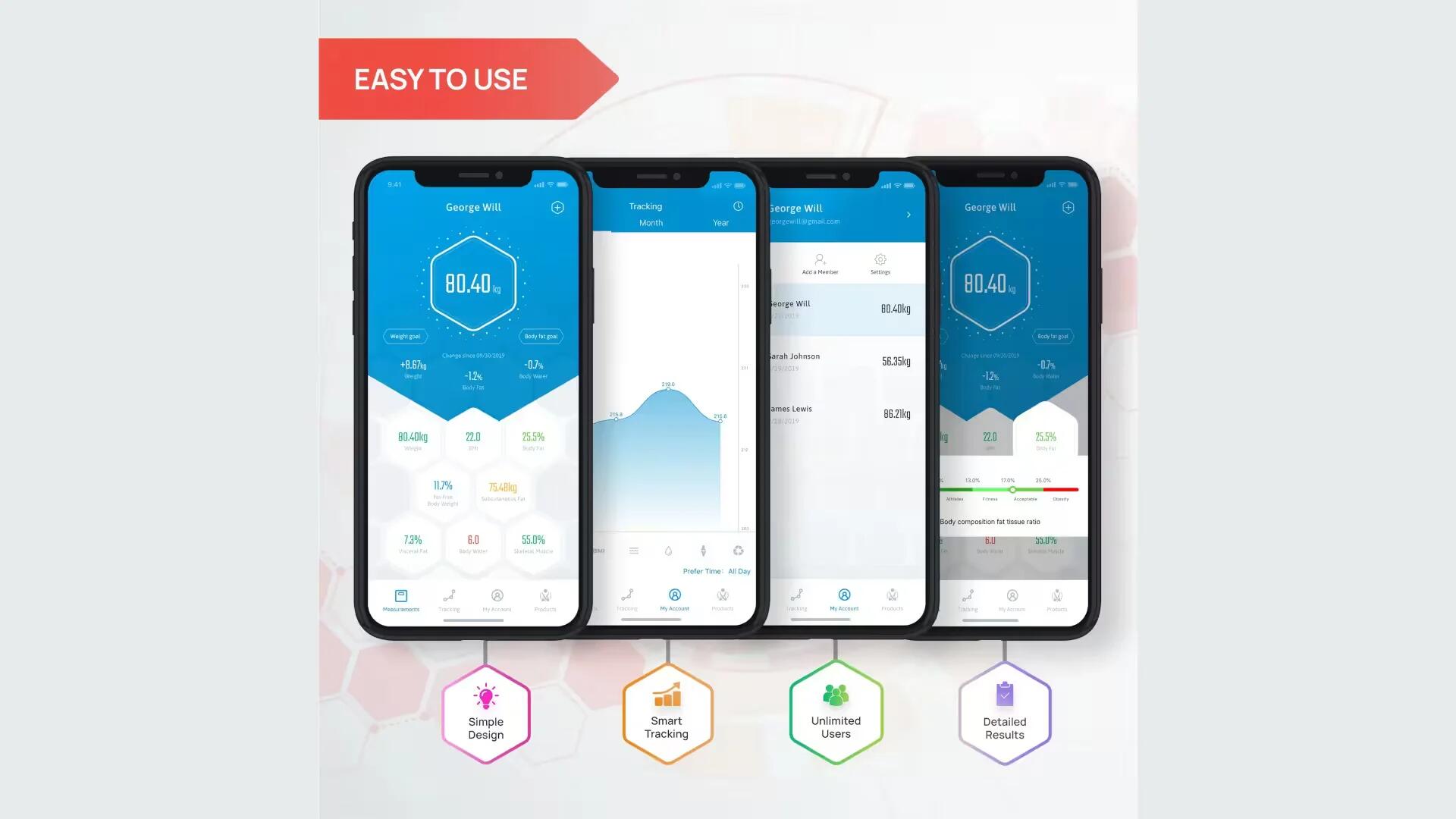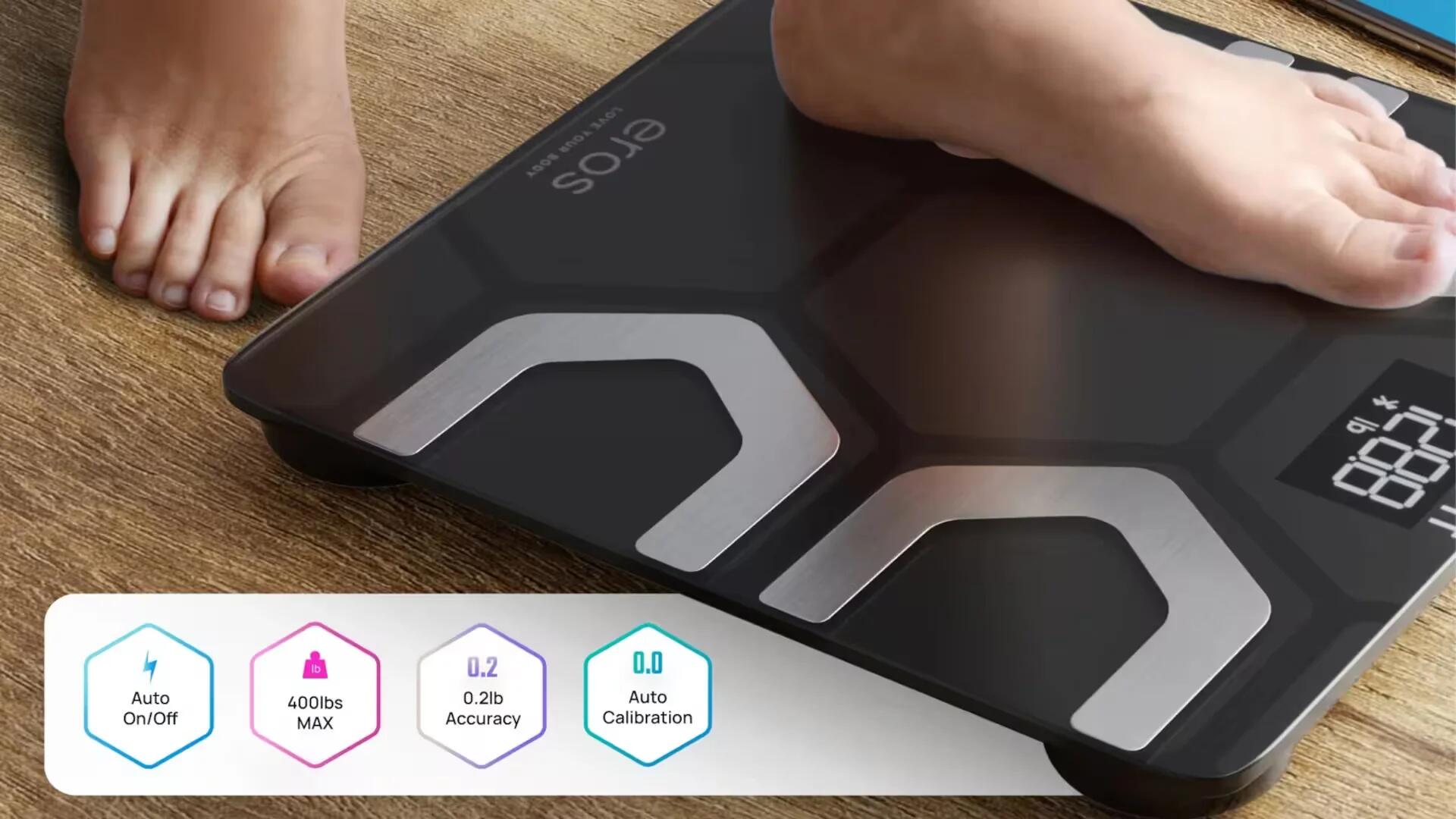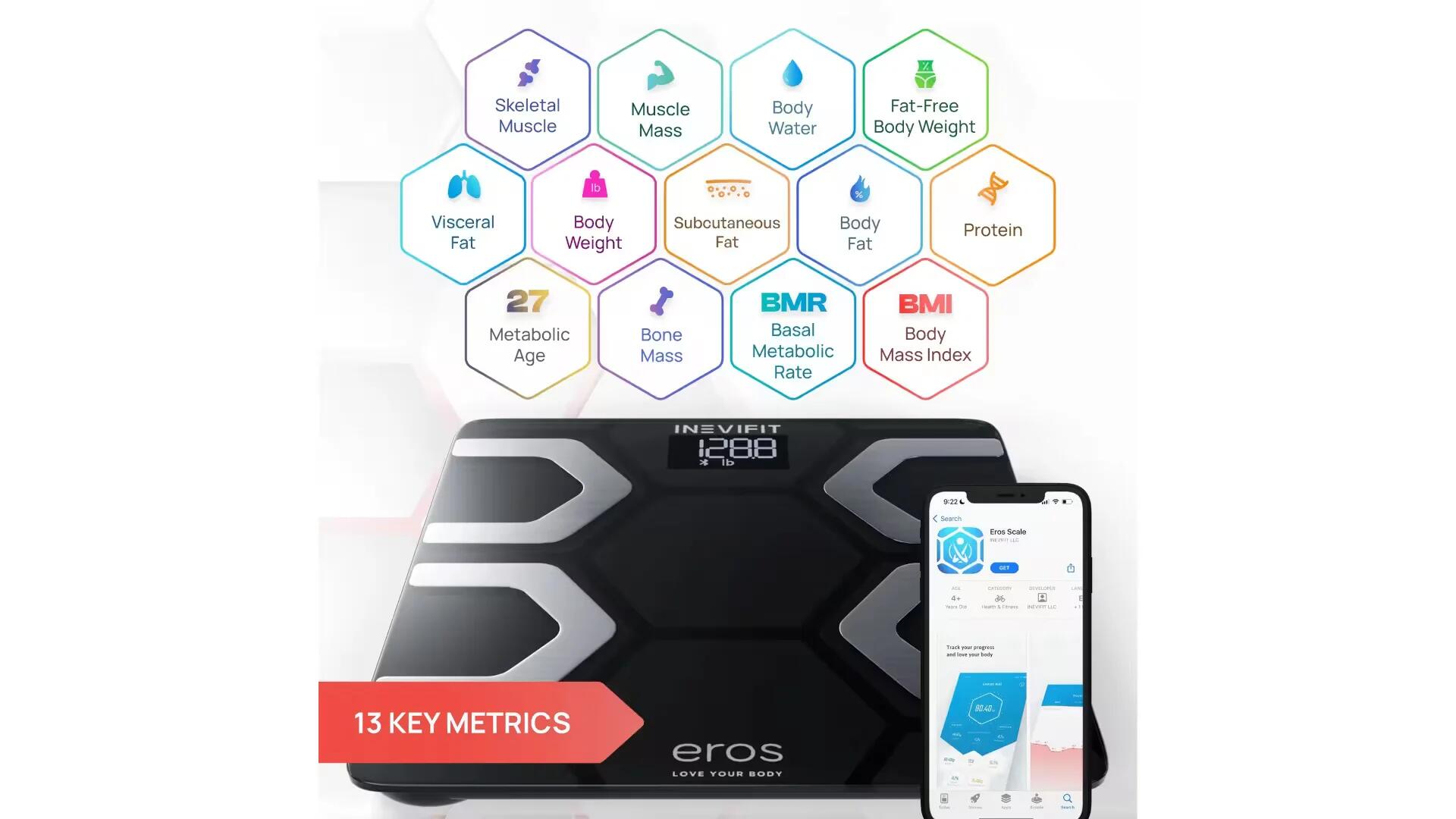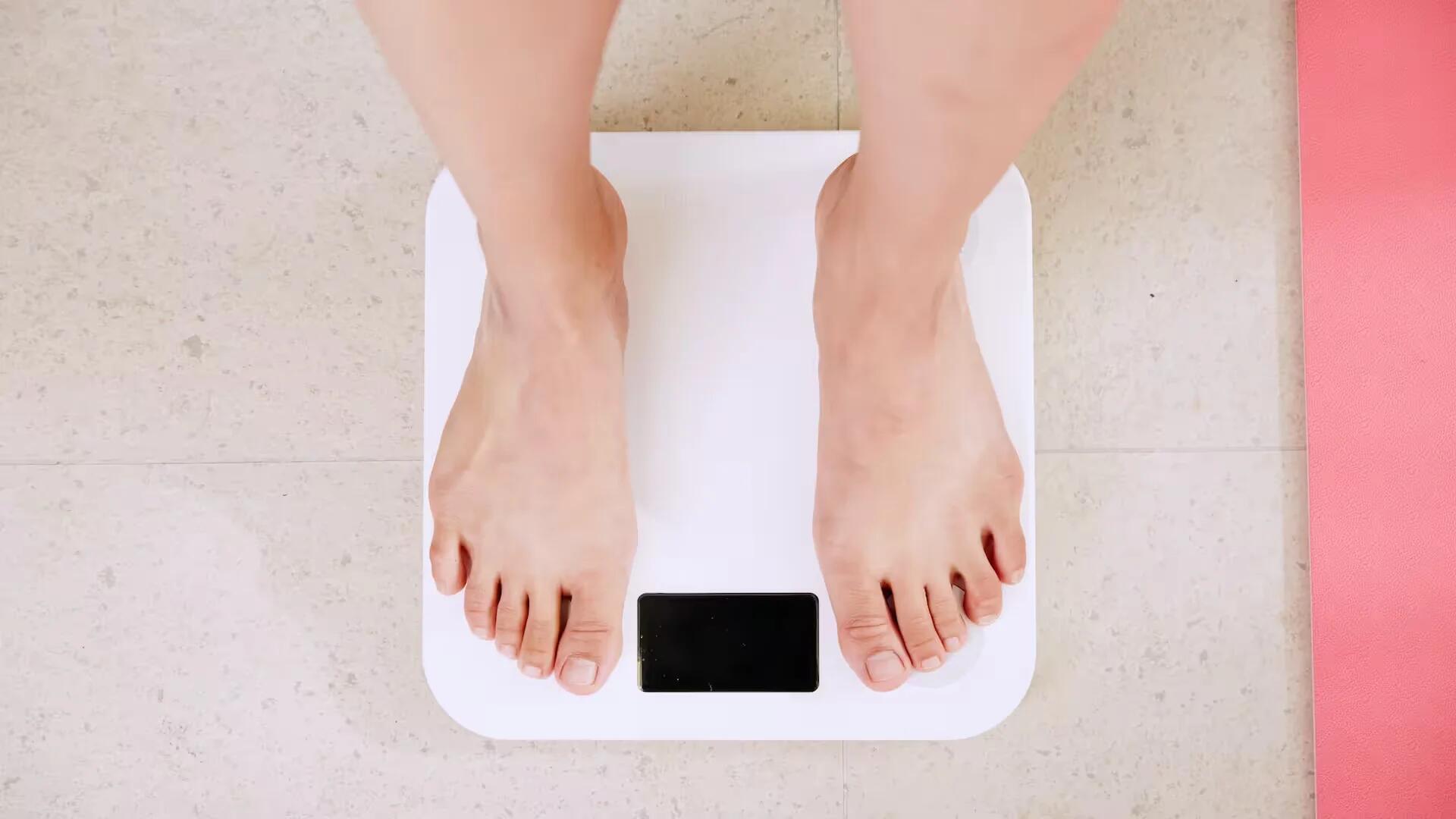A scale is a universal device present in the homes of millions of people worldwide. It is usually tucked away in some bathroom corner, reminding you to weigh yourself from time to time. You may love or hate it, but its purpose is clear.
Due to technological advancements, modern scales can measure more than just weight. Smart scales have been around since 2009, revolutionizing the fitness and health industries. For instance, the Eros Scale employs an advanced system that measures several vital health metrics, giving you a more profound understanding of your body.
If you are wondering how smart scales work, keep reading. We will also provide a complete breakdown of body fat percentage, alternative ways of measuring it, and explain why smart scales are the best option for testing this metric.
What Is Body Fat Percentage?
Body fat percentage (BFP) refers to the proportion of total fat mass in a person’s body relative to their total body mass. We all need an essential amount of body fat for survival. However, the greater the amount, the more we are susceptible to serious conditions such as high blood pressure, Type 2 diabetes, stroke, and more.
That said, keep in mind that body fat has nothing to do with your muscle mass. Muscle is heavier than fat, so two people with the same BFP may look entirely different because of it.
The chart below shows the generally accepted or healthy body fat percentage for different fitness levels in males and females.
| Fitness level | Men | Women |
|---|---|---|
| Essential fat | 2%-5% | 10%-13% |
| Athletes | 6%-13% | 14%-20% |
| Fitness | 14%-17% | 21%-24% |
| Acceptable | 18%-24% | 25%-31% |
| Obese | 25%+ | 32%+ |
It is worth noting that body fat percentage not only varies between genders but also depends on age.
Measuring Body Fat Percentage
There are different ways of measuring body fat. Health professionals recommend determining it along with your body mass index (BMI). Although this metric does not measure fat, it is a good screening tool for finding out whether you are obese, overweight, normal weight, or underweight.

However, since the body mass index is based only on your weight and height (without considering factors like pregnancy and age), it can provide inconsistent results.
Alternative methods of measuring your BFP include:
- Bod pod: This vertical egg-shaped machine requires you to sit inside for several minutes until it finishes measuring your body fat via air displacement plethysmography (ADP). Access to these machines is limited to research laboratories, and testing can be expensive.
- Calipers: Health professionals use these clamp-like tools to pinch the fat and skin to measure their thickness in areas where people typically store fat the most. The method may be inexpensive, but its reliability depends on the technician’s skills.
- DEXA scans: A DEXA scan is a low-energy X-ray machine designed to test bone density. However, it proved to be a reliable tool for measuring body composition. Although the procedure is quick and non-invasive, it can cost a pretty penny.
- Underwater weighing: This method, also known as hydrostatic weighing, is only available in specialized facilities and is quite costly. When measuring BFP, a person first sits on a scale “on land” and is then submerged underwater. Thereafter, the technician compares these two readings and calculates your BFP.
In our experience, a smart body composition scale gives the best and most reliable results when calculating your body fat percentage. Let us inspect how they work and what they measure.
How Smart Scales Work
Most contemporary smart scales rely on a technology called bioelectrical impedance analysis (BIA). After stepping on a small sensor, the scale sends a weak electrical impulse through your leg and across the pelvis. Different tissues impede this traveling signal as the smart body fat scale measures the resistance level.
Compared to muscle, fat does not conduct electricity well. As a result, the more resistance the electric current encounters, the higher the body fat percentage.
The scale then combines a person’s height, weight, and age with electrical resistance values. You can provide this information via mobile apps that connect to a smart scale via Bluetooth or Wi-Fi.

Smart scales allow you to measure your body fat percentage at home accurately and efficiently. For example, the Eros Scale has heavy load sensors that can hold weights up to 400 pounds (181.44 kg) with an accuracy of +/- 0.2 lb (90.72 g). Additionally, the Eros Scale metrics are within +/- 3% of the DEXA scan result standard.
What Metrics Does The Eros Smart Scale With Body Fat Provide?
As mentioned, modern smart scales deliver much more information about your body’s health than traditional ones. So, along with BFP, the Eros Scale will provide you with 12 other accurate metrics:
- Body water percentage
- Basal metabolic rate (BMR)
- Body weight
- Body mass index (BMI)
- Protein
- Metabolic age (MA)
- Muscle mass
- Bone mass
- Visceral fat (VF)
- Subcutaneous fat
- Skeletal muscle
- Fat-free body weight

Aside from its elegant and modern design, this smart body fat scale features a mobile app that is free, easy to use, and can be connected to Apple Health, Fitbit, and Google Fit. Thanks to its ability to support unlimited accounts, you can get your entire family and friends on board, exercise together, and keep an eye on each other’s progress.
Bottom Line
If you are looking for a reliable way to measure your body fat percentage, INEVIFIT’s Eros Smart Body Fat Scale is the ideal solution for you. This smart scale is simple to use, comes with a handy app that allows you to monitor your results at any time, and, most importantly, records 13 essential health metrics.
Measure yourself and devise a plan to achieve your dream body. Do not forget to exercise and switch to a healthy diet, and you will attain a stunning physique and get visible results even faster than you had imagined.
